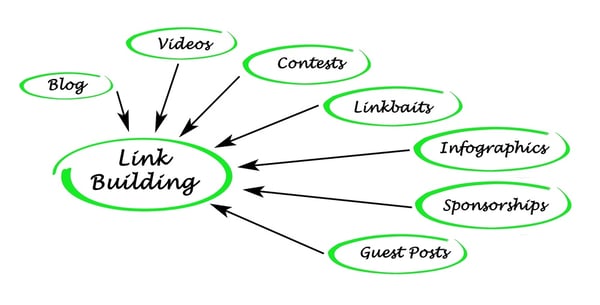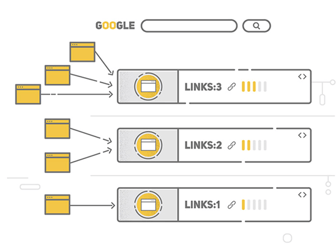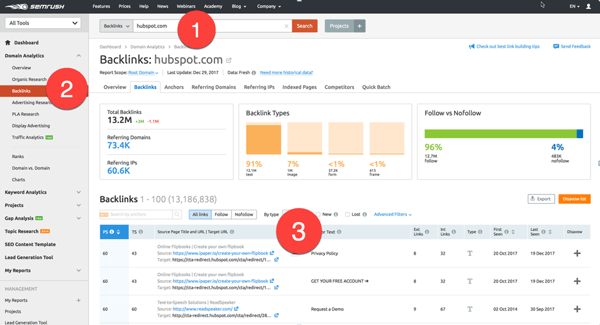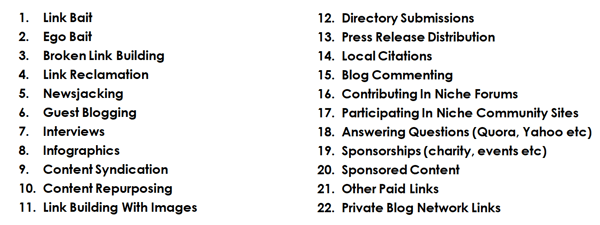This article has been updated for 2020
In case you missed it, not too long ago, we featured an article that underlined some key findings by a 2018 study carried out by Buzzsumo. In this study, Buzzsumo analyzed how content trends have shifted during 2017, and underlined how these alterations will change the way creators need to change the way they generate and distribute content.
One of the key findings was that the median for backlinks was 0, which means that half of all content posted during 2017 received no backlinks. In this article, we aim to shed some light on what backlinks are, why they are important, and how to begin generating them for your content.

So what are backlinks?
Essentially they are links that are generated by another website, directing visitors back to your content.
- They are an exceptional method to increase referral traffic to your content and site.
- They help boost SEO significantly.
Studies have found that a strong correlation exists between the number of high quality backlinks, a websites authority, and its search ranks on Google.
How do backlinks work?
Each link generated from another domain essentially acts as a "vote" or "point" for your own page. The higher the number of "votes", the greater the effect on a website’s visibility, and ultimate search ranking.

Image Source: Ahrefs
Not all links are equal
Links from a highly reputable website will always outperform links from low authority sites, even if they are quantifiably less. When trying to determine the quality of a backlink, the two metrics that usually have the most impact are domain and link rankings.
Location affects the quality of the backlink
Links should be placed where visitors can see it and click on it. For example, a link that is placed within a content piece is much more likely to be clicked than a linked placed on a sidebar or a footer.
Furthermore, even anchor text can affect the quality of a backlink. Let’s use the term “white sneakers” for example. A website that contains the keyword “white sneakers” is likely to benefit from a percentage of its inbound links containing that exact (white sneakers) or partial (the most comfortable white sneakers) phrase.
How can you generate backlinks to your site/blog?
The best way to get started is to determine where your competitors are getting their backlinks from. You will need a strong analytics tool for this segment, and we use SEMrush.

Using this tool, you will want to (1) enter the domain of your competitor, click on “Domain Analytics”, and (2) select “Backlinks.” From there (3) you can analyze the source page, the anchor text, external and internal links, and link type.
While you are here, it might also be beneficial to see if there is anyone currently backlinking your site. The process is exactly the same, just enter your own domain and follow the steps from above.
In the event that there are sites linking back to you, be sure to evaluate the quality of the link. If it is from an authoritative site, try contacting the source and begin nurturing the relationship to continue generating additional links to your site.
Other Benefits of SEMrush
What are the most common link building strategies?

Which are the most effective link building strategies?
Link Bait Strategies
Link bait refers to creating content which attracts links naturally due to its high value or unique proposition. In this situation links are considered to be “earned” rather than “built.” Such articles can include in depth research, unique data, survey information, or attractive and unique graphics.
Guest Blogging/Posting
Guest blogging is among the preferred methods of getting high quality, natural backlinks. Most (if not all) niches have high quality sites and blogs, accepting guest posts. It would be wise to set aside some time to find these blogs in your niche.
Infographics
Infographics are an effective way to maximize the return of your outreach efforts. What we essentially mean here is that, outreach is always more effective when there is a value proposition for the host, and offering to provide a high quality infographic is one such value exchange.
Remember: Great Content + Targeted Outreach + Added Value = Links
Broken Link Building
If you come across another piece of content with a broken link, it could be a great opportunity for your article, as well as creating a relationship with the author of that post.
After you find the broken link, create similar resource on your own site and reach out to the creator, offering your content as an alternative. Not only can this potentially yield a reasonably high success rate (as most webmasters will be keen on fixing errors on their website,) it also shows that you are looking out for fellow creators in your industry; thus boosting your brand image.
Interviews
Interviews themselves can take on many forms:
- Blog interviews
- Participating in ’expert roundup’ posts
- Podcasts
- Webinars
The ultimate goal here is to continue to grow your profile and authority in your niche in order to pick up some quality links along the way. These are also the kind of links that drive traffic, so are very much on the “white hat” side of the link building spectrum.
Bonus: In this video, Brian Dean from Backlinko shares one of his own tactics called Guestographics. Check it out below!
While each point above can essentially warrant entire articles on their own, we hope you are now better equipped to lay your foundation for a link building strategy. Do you have any questions? Is there anything you would like us to dig deeper into? Let us know in the comments below!
As always be sure to check out the links below for more digital marketing insight:



